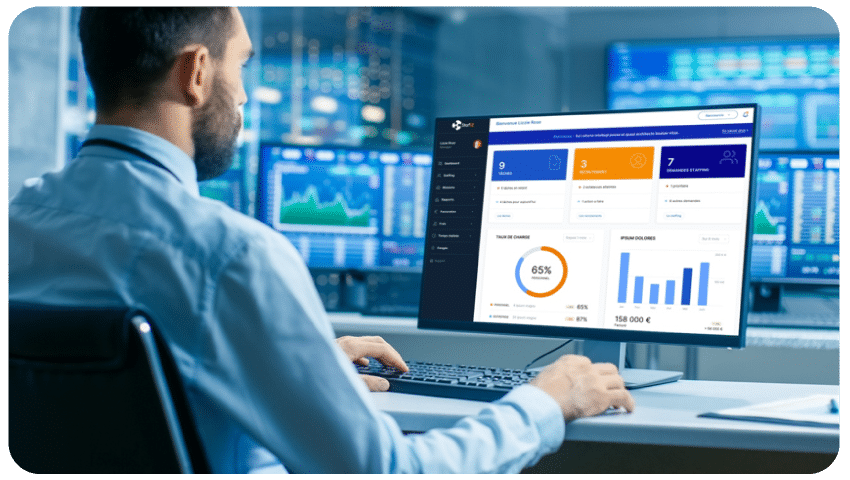What is a project management ERP?
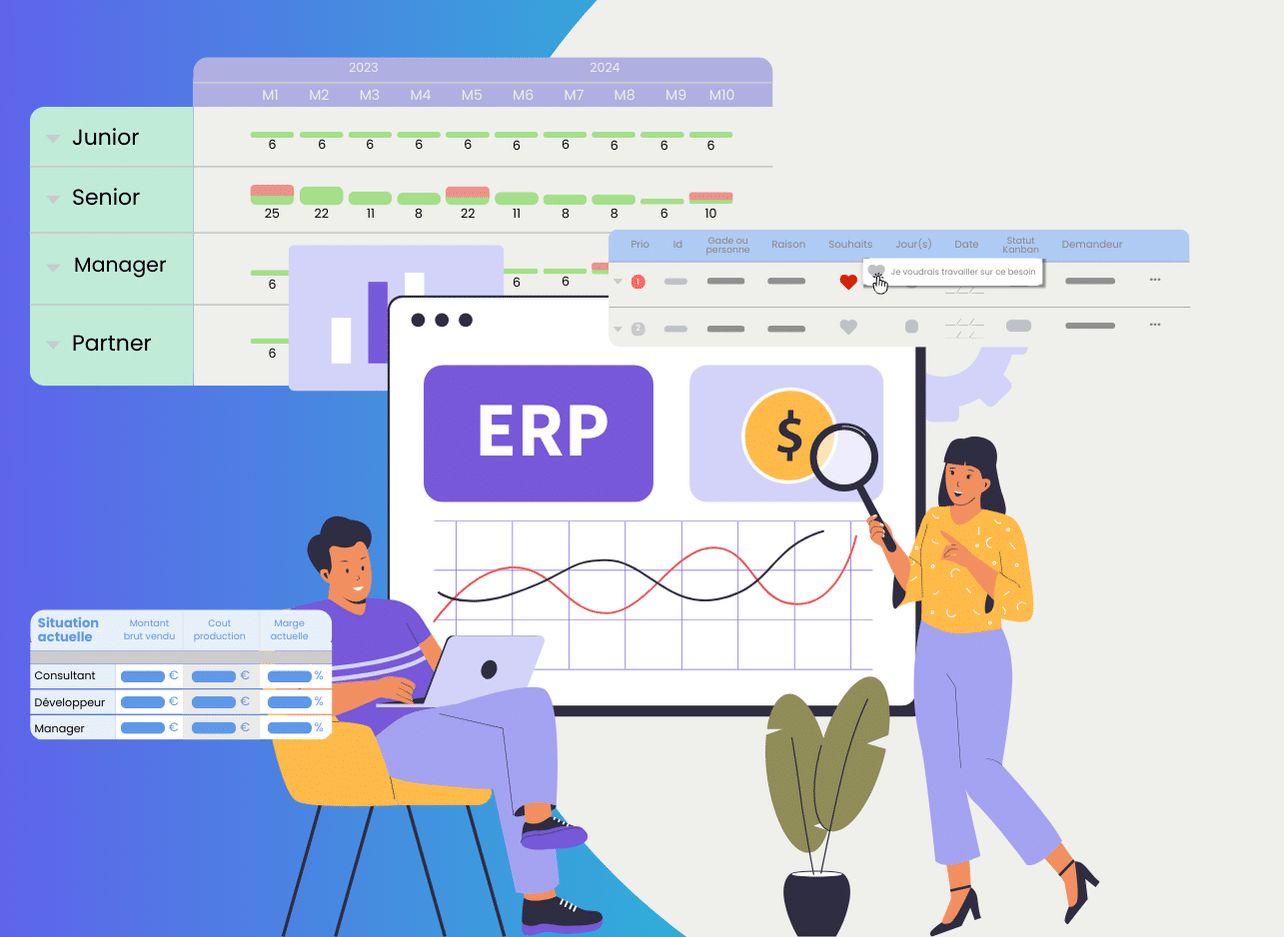
An ERP must have a number of specific characteristics to really help boost the company's activity.
Among the most important are accessibility to information, automation of processes , and any functionality that facilitates cross-departmental collaborations.
If, for example, a company is about to develop and launch a new application, it will need to coordinate human resources from different industries. From the development team, to design to marketing.
To meet all these specificities, the choice of an ERP specialized in project management becomes all the more interesting as it will allow you to centrally manage – without having to adapt to the hassles and other dysfunctions sometimes related to the integration of several tools. We take stock.
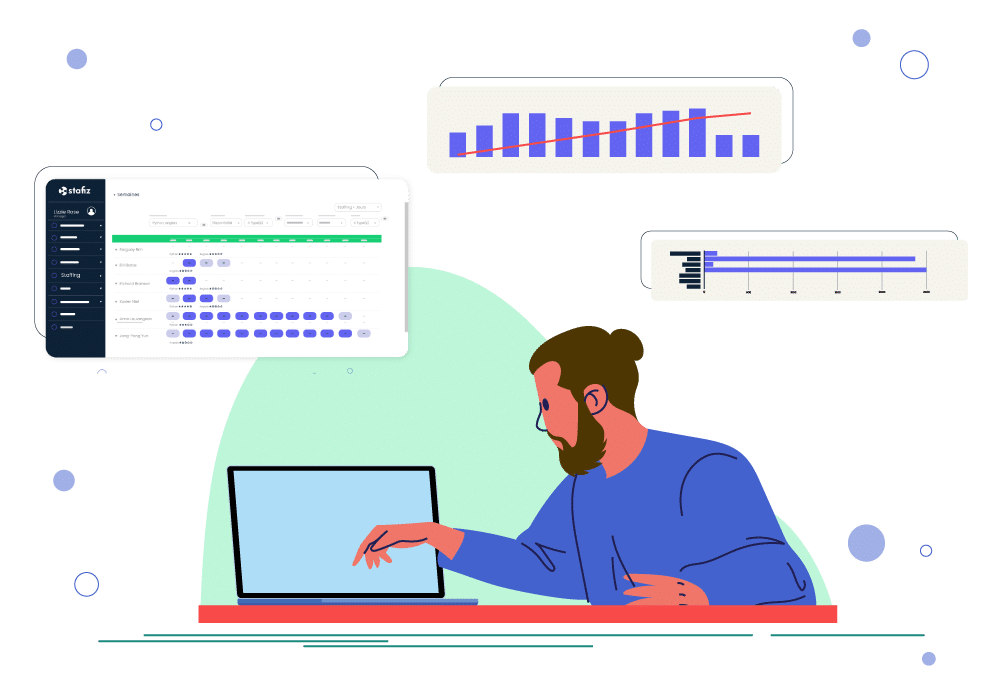
What is an ERP for project management?
An ERP for project management makes it faster and easier to coordinate tasks, automate actions, and manage processes.
Beyond the technical aspects, this tool also allows you to involve other areas of the company, which are essential to achieve strategic objectives.
This is the case, for example, with the accounting and financial management of the project, or the management of resources. The first sector makes it possible to monitor compliance with the budget. The second, to corroborate compliance with schedules, coordinate performance evaluations, and adjust project schedules.
These are just two examples, but with the right ERP management system, you can go much further when it comes to improving a company's productivity and efficiency.
Is an ERP really necessary for project management?
Such a tool also makes it possible to centralize relationships with customers, external suppliers or any other privileged interlocutor within the organization.
Relationships with customers, external vendors, or any other value group within the organization can be coordinated through this feature in a much more agile, faster, and error-limiting way. Hence its importance.
💡 Stafiz allows you to include your external collaborators in the management of your project schedules. Dashboards, updated in real time, give you a more complete view based on all the data.
What are the key features of an ERP for project management?
As mentioned earlier, the project management ERP has many features, with a prism that is sometimes micro, sometimes macro.
While all of these technical features are useful, they may not be necessary for your specific purpose.
To guide you, here is a list of important features to look for in a project management ERP software. List and rank them according to your strategic objectives!
Financial features
For optimal management, your ERP must be able to combine the monitoring of project budget consumption with the total profitability of the company.
In this way, financial transactions such as invoicing, accounting closings, and the allocation of costs for the acquisition of resources or materials are kept up to date. This will avoid unpleasant surprises and hefty bills!
✏️ Examples of financial monitoring features for an ERP: purchase order, time tracking, projected profitability, project progress monitoring, cost management, customer invoicing management, external invoicing management.
Project planning features
They are at the heart of your needs!
These features of a project management ERP allow you to align resource management with an engagement's budget.
✏️ Examples of project planning features for an ERP: employee profile, skills management, allocation of resources to tasks, workload and availability monitoring, projected load, absence management, CRM, time tracking, resource needs management, recruitment monitoring.
Project management features
You choose to use a project management ERP to monitor your business as a whole – and make it easier to manage.
Certain features are therefore essential to be able to maintain good visibility on operational execution and project management, without confusing information.
✏️ Examples of project management features for an ERP: performance dashboards, multi-client and business unit project management, power BI, process automation, deviation alerts, reporting tools, access rights management.
What are the advantages of an ERP for project management? Why choose this type of software?
One ERP for project management offers specific advantages.
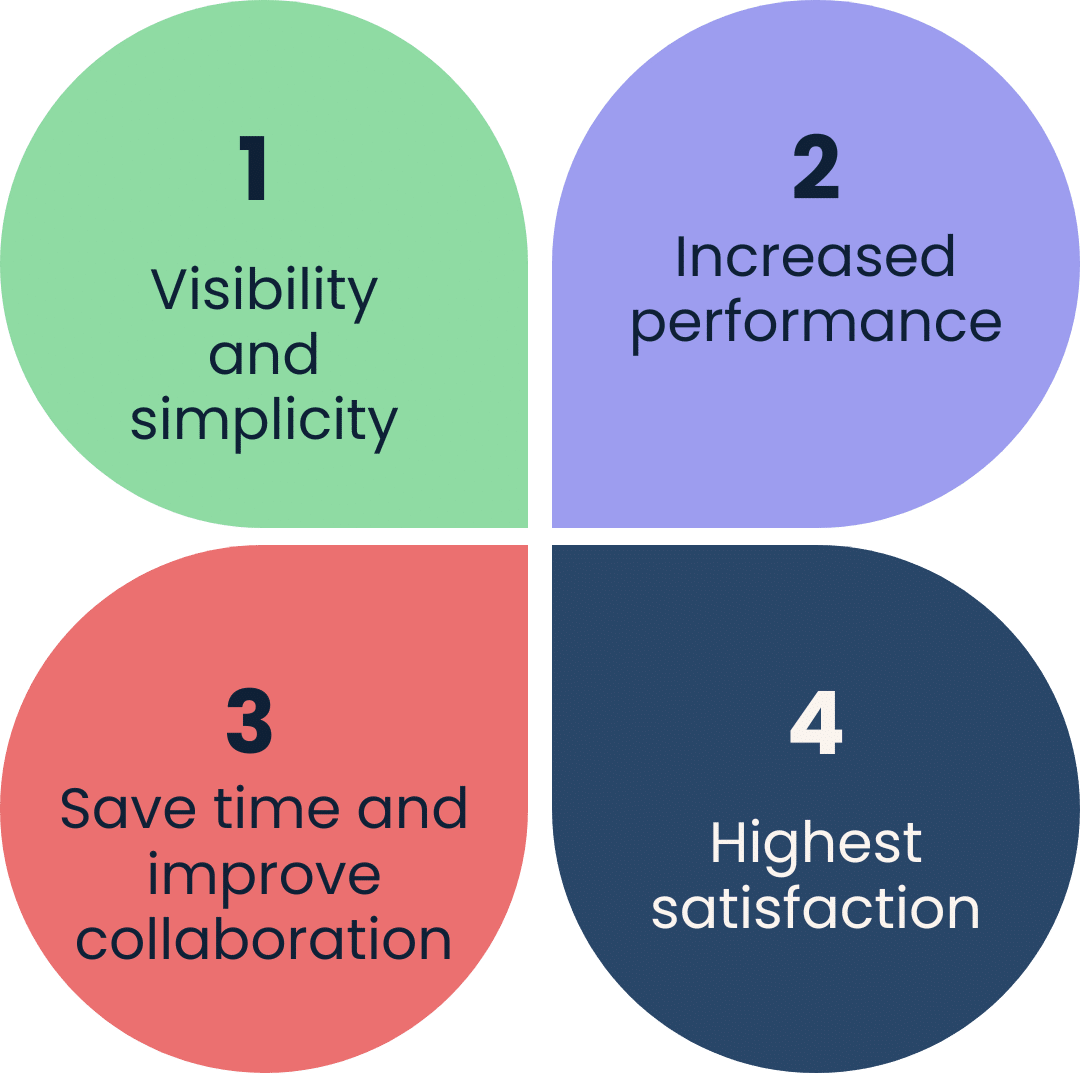
Better visibility and simplified management
With this type of tool, a project or team manager can easily view the actual status of the project at any time.
Progress, graphs, deadlines, costs... A global vision must allow permanent access to all types of information with a visual and simple representation that promotes a quick understanding of the project's state of health, and accelerates the right decision-making for the achievement of objectives.
The sharing of information must also be transversal. It would be counterproductive to involve only project managers.
The human resources department is a good example of a party to be integrated into the sharing of information. They can track absences, but also the team's productivity. This makes it possible to identify recruitment or training needs, for example.
Accounting departments are also good candidates, to check that the hours invested are adjusted at the budgetary level to the requirements of profitability.
It is a multi-departmental feature that provides valuable and real insights to improve all areas of the business.
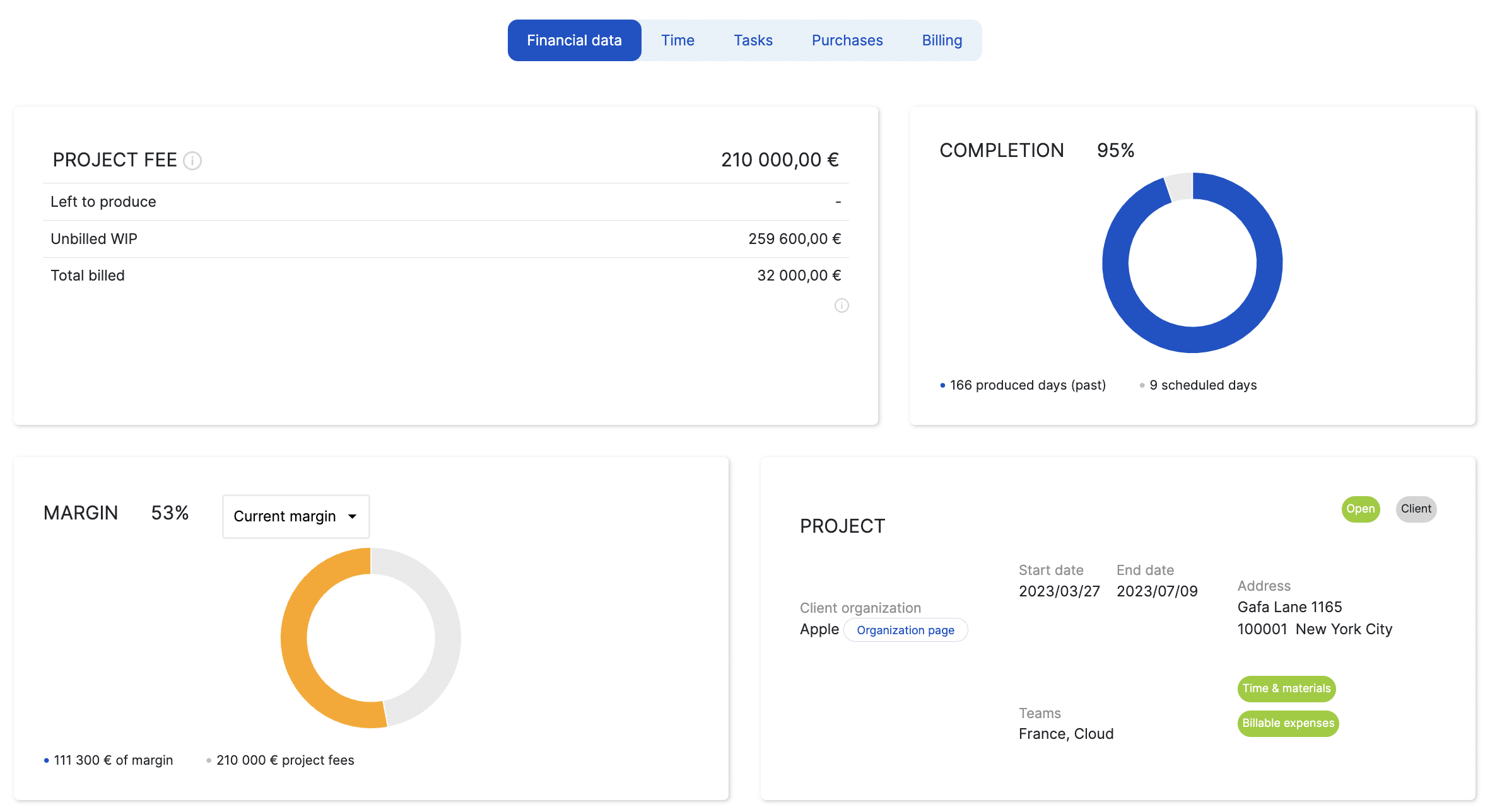
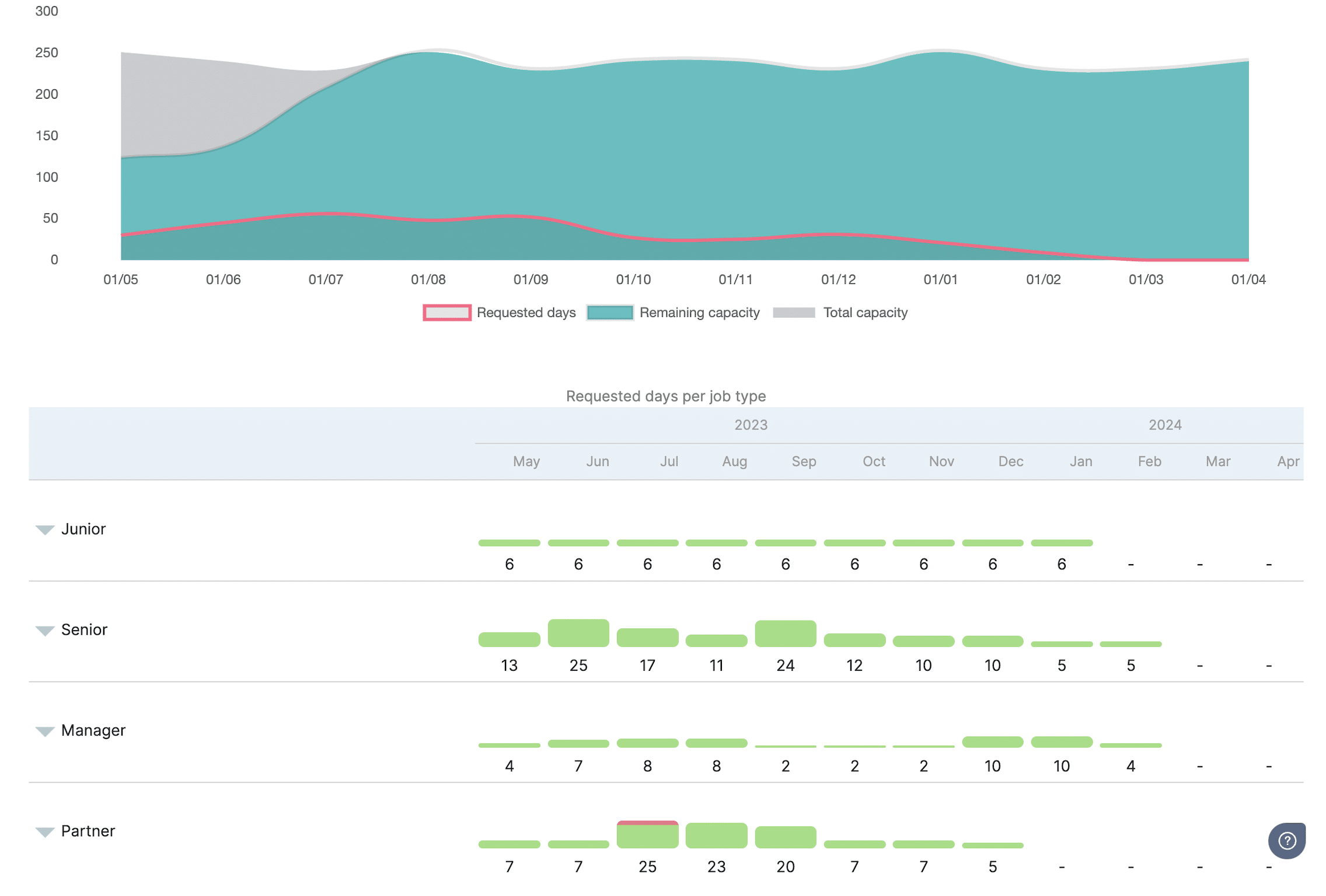
Questions:
Absolutely! Most ERPs are designed to manage multiple projects in parallel. They make it possible to monitor and analyze each project individually while keeping a global vision. You can monitor shared resources, identify scheduling conflicts, and optimize priorities based on your organization's strategic goals. This ability is especially useful in service companies where teams are often working on multiple projects simultaneously.
How does an ERP make it easier to keep track of budgets and deadlines in a project?
The above makes it easier to detect and anticipate opportunities for cost optimization.
With an ERP, we don't just make it easier to achieve goals. In addition, we can easily reorganize resources to further maximize the KPIs we have determined to be relevant.
💡 Case in point: Wehave set ourselves the goal of completing the development of an app for mobile devices in three months.
A good ERP project management system doesn't just allow us to ensure that we will achieve this goal. It will also allow us to quickly identify areas for improvement that need to be prioritized to avoid further reducing this initial objective.
By analyzing planning scenarios to achieve projected profitability, mobilized resources can be freed up from their tasks earlier to focus on other projects.


By identifying potential risks, corrective actions can be taken such as:
- re-negotiate with the client;
- change the resource planning (reallocate tasks to more junior profiles);
- find ways to accelerate lagging projects.
Discover project management with Stafiz
Save time through efficient collaboration
Another key advantage of an ERP for project management is the time saved on process optimization.
No need to manually fill out an activity report ! No more reliance on multi-media communication to notify the completion of previous tasks so that the next tasks can begin!
All of these communications are centralized and automated, saving a lot of time in terms of coordination.
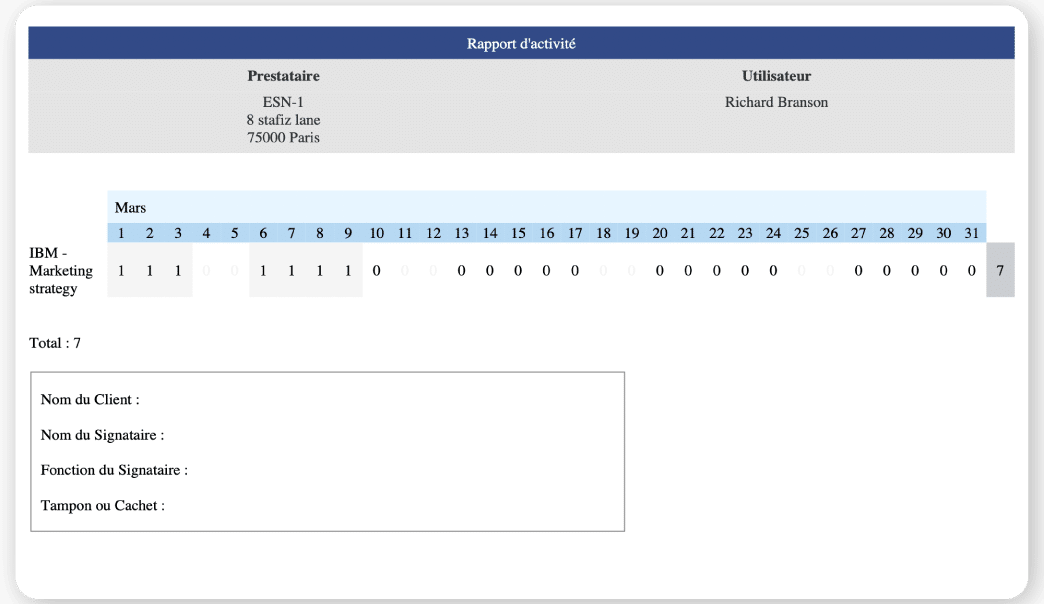
Everyone knows what needs to be done and when it needs to be done, because the data is available to everyone in the project at all times and in real-time. The little extra, the automated notifications and alerts that facilitate coordination without wasting time.
Communication requirements and time spent in meetings are significantly reduced. This improves the quality of communication and can focus on the really relevant and strategic aspects, rather than on operational issues.
These advancements are particularly useful when it comes to collaborating with other departments that, although not actively involved in the central development of a project, are critical to its profitability.
To take the example of the development of an application, the finance and accounting team does not participate in the development of the code necessary for the proper functioning of the application. However, their contribution is essential to ensure cost control, which has a direct impact on profitability.
Another example is the meetings of resource planning are no longer a headache. No need to send corrective schedule emails, everything is centralized in a clear and simple view. This makes meetings more efficient and faster.

Greater satisfaction of teams and employees
All of the above elements generate greater satisfaction among teams and employees.
They perceive that the company makes it easier for them to shine in the functions that are truly essential. Their work focuses on high-value tasks and less on operational and administrative tasks – often seen as chores. This results in a much higher quality end result.
This has a very positive impact on the working environment which, at the same time, generates greater production capacity on the part of the teams.
A better guarantee of quality
Employees can then focus on their tasks, deliveringa better quality project, which allows the company to grow and improve its churn rate.
A growth of the company that, at the same time, will allow for professional development that will facilitate the creation of career paths that meet the growth needs of talented employees.
In a time of talent crisis, where employees are demanding that the company meet certain needs, an ERP project management system is a great tool to reduce turnover within a company.
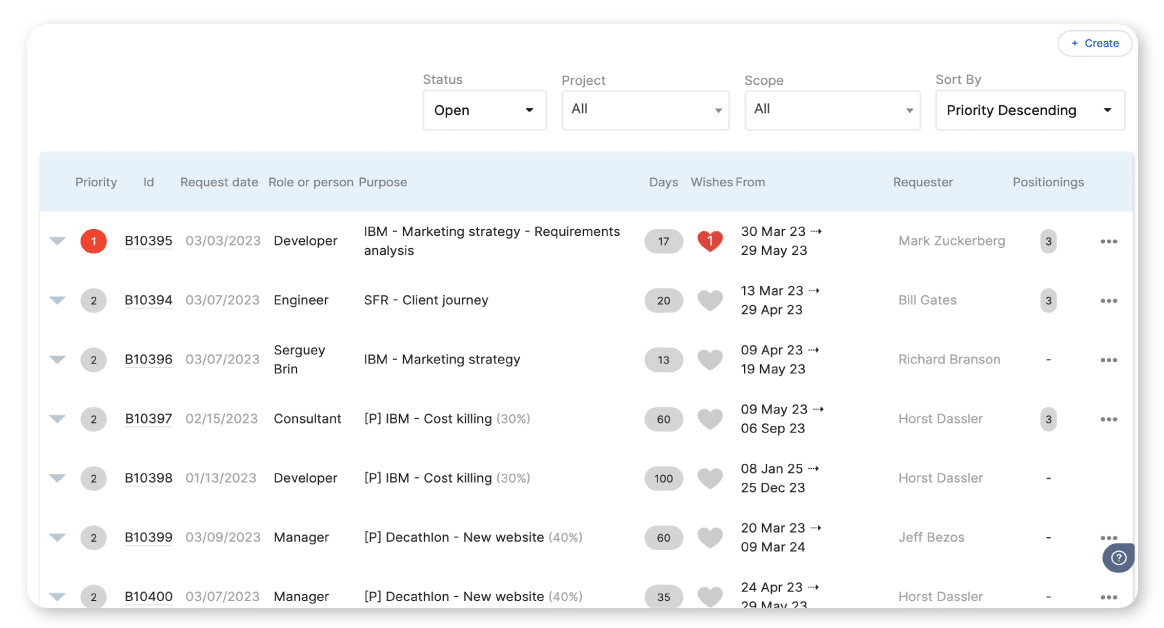
Discover resource planning with Stafiz
Who uses an ERP for project management in companies?
The benefits of an ERP for project management are transversal. Therefore, the entire company benefits from the benefits offered by this type of tool.
The operational team is no exception. It has a greater ability to direct, coordinate and optimize processes.
The finance and accounting team has complete, reliable and real-time control of key data such as costs and profitability via project KPIs.
Invoicing is made easier and cash flow can be optimized, thanks to the automatic billing reminders offered by this type of tool. In addition, all data can be imported into the accounting software with just a few clicks, further enhancing the relevant information provided by the ERP.
Another major beneficiary of using an ERP for project management is human resources. Effective working time, profitability, balancing of possible overloads, absences, performance, expense management... A multitude of operations are centralized and accessible.
This saves the HR department a considerable amount of time that it can devote to valuable issues such as improving training rhythms, reviewing incentives or ensuring an adequate career plan for all employees.
These issues have an overall impact on the business, improving productivity and positioning HR as a key department.
Finally, the general management is the main beneficiary of the implementation of this type of solution. This is because all business processes become more efficient, optimal and measurable over time.
Questions:
Yes, a project management ERP can replace tools like Excel or Trello, as it centralizes all the information needed for project management: planning, budgeting, resources, performance tracking, etc. Unlike these tools, which are often limited or fragmented, an ERP offers an overview and advanced features such as real-time analysis, multi-project management and integration with other systems (invoicing, CRM, etc.). This makes it particularly suitable for the complex needs of service companies.
It depends on your business needs. A SaaS (cloud) solution is quick to deploy, accessible from anywhere, and more cost-effective in the short term thanks to a subscription.
It is well suited to companies wishing to evolve with a standardized and regularly updated solution. On the other hand, a custom ERP is ideal for companies with very specific needs, but it requires a larger investment and longer deployment times. In most cases, SaaS solutions are a perfect fit for service companies thanks to their flexibility and scalability.


